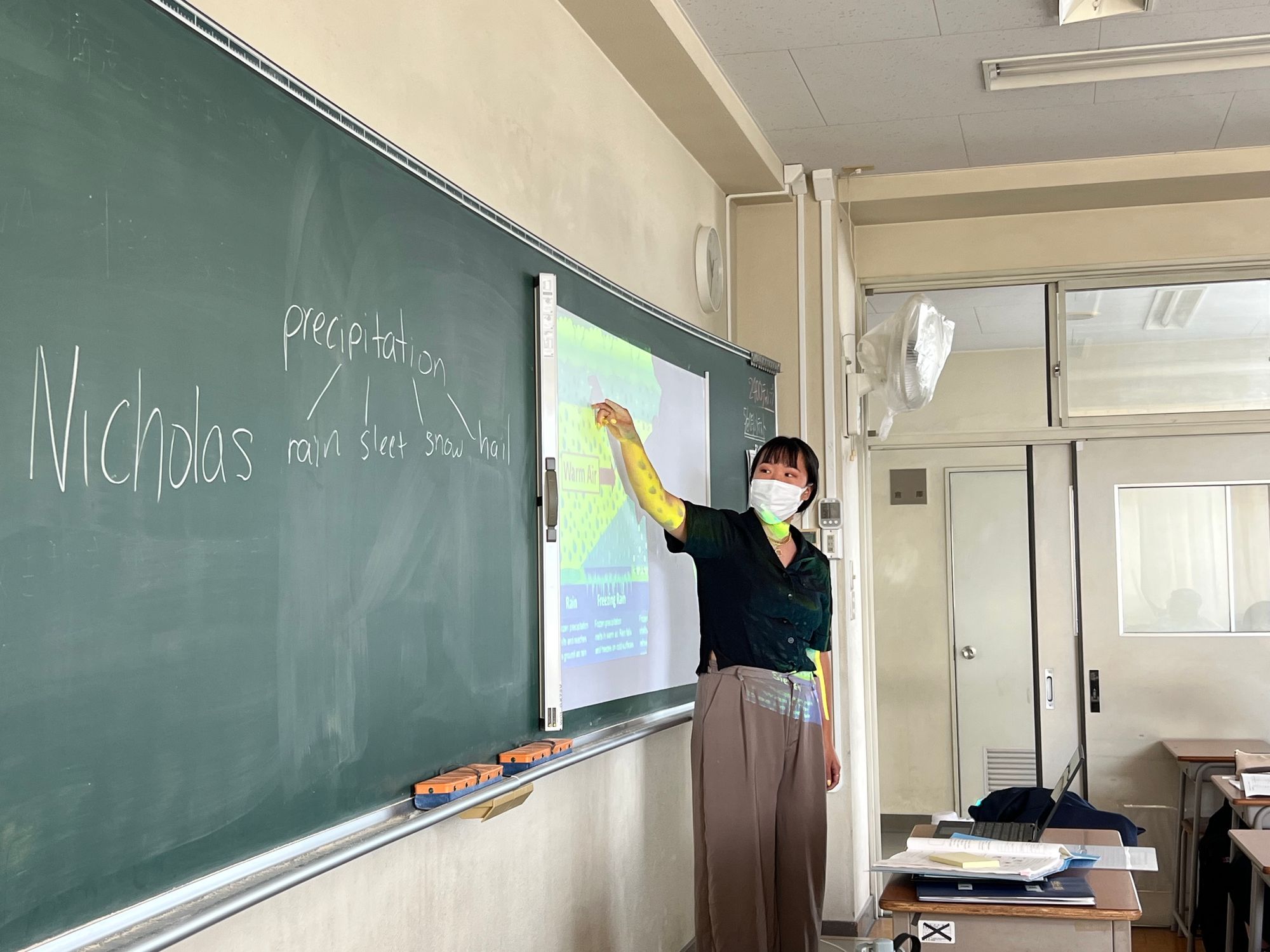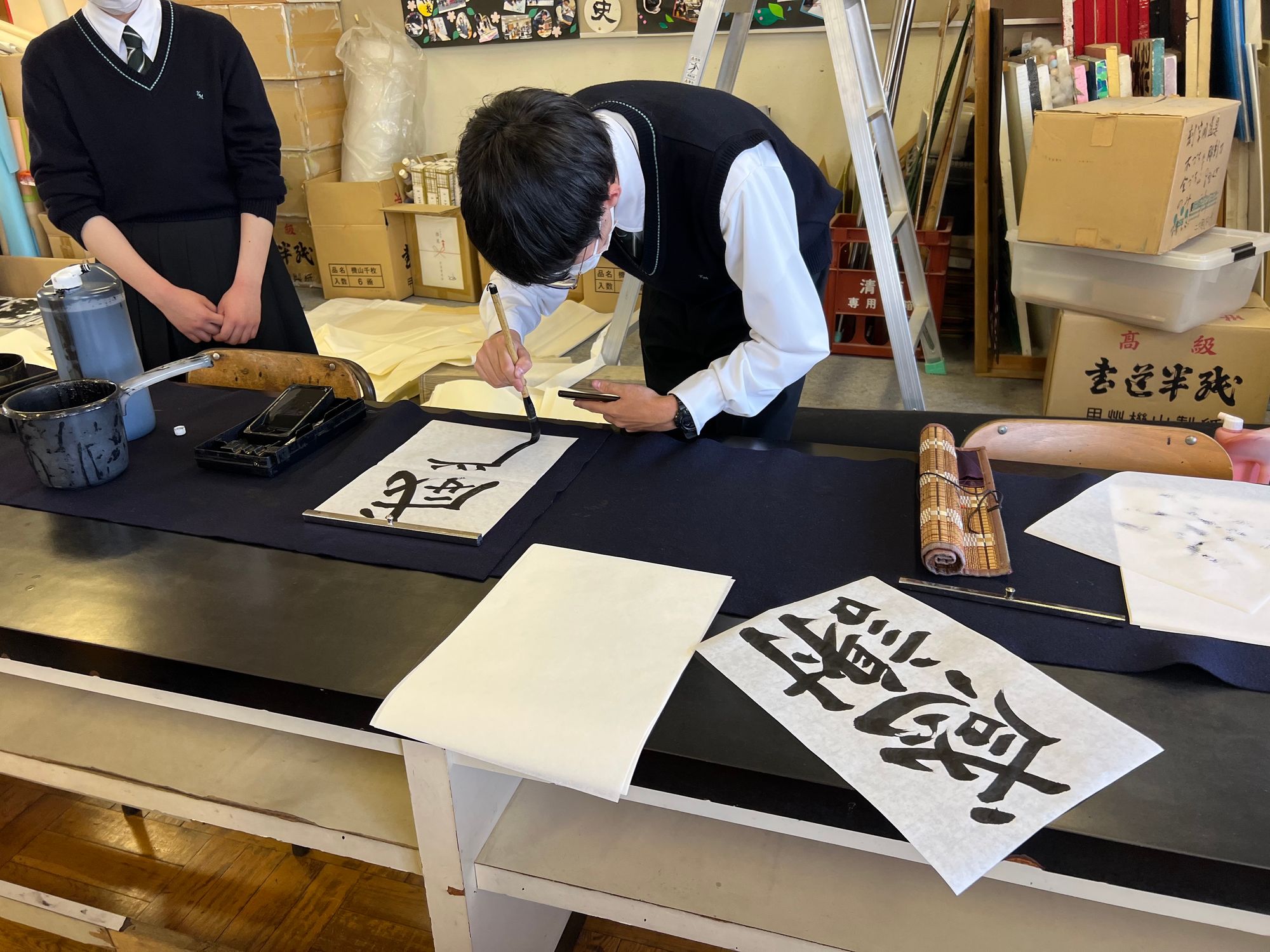Differences between American and Japanese High Schools

When I decided to travel to Japan this year, I was excited for two reasons. I was going to see my friend, and I was in for a once-in-a-lifetime opportunity to experience Japanese culture. I knew that chances were slim that I would ever be able to do what I could on this trip: spend multiple days at a high school in Japan, learning about the cultural differences that exist in secondary education. My good friend from Ohio State, Katherine, taught English at a high school in Kofu, a city in Yamanashi prefecture.
The whole time ended up being a blast. My friend introduced me to new people, I tried a fantastic collection of Japanese cuisine, saw Mt. Fuji in all its glory, and had much fun at the diverse set of cities we traveled to during Golden Week. Still, this experience at my friend’s high school stood out in a special way.
Katherine did a lot of prep work–asking club coordinators if we could join their club after school and asking supervisors if I could give a little presentation about the U.S. to English classes. Thanks to this, I had an action packed time at the school. I joined many classes over the course of a couple days, and was able to talk about American culture with most of them. After school, we joined the soccer club, baseball club, and archery club, as well as the music, calligraphy, and karuta clubs. Students and staff were exceedingly kind and respectful. I felt blessed to have such a unique opportunity. Here are some of my thoughts of the differences between American and Japanese schools (in no particular order)!
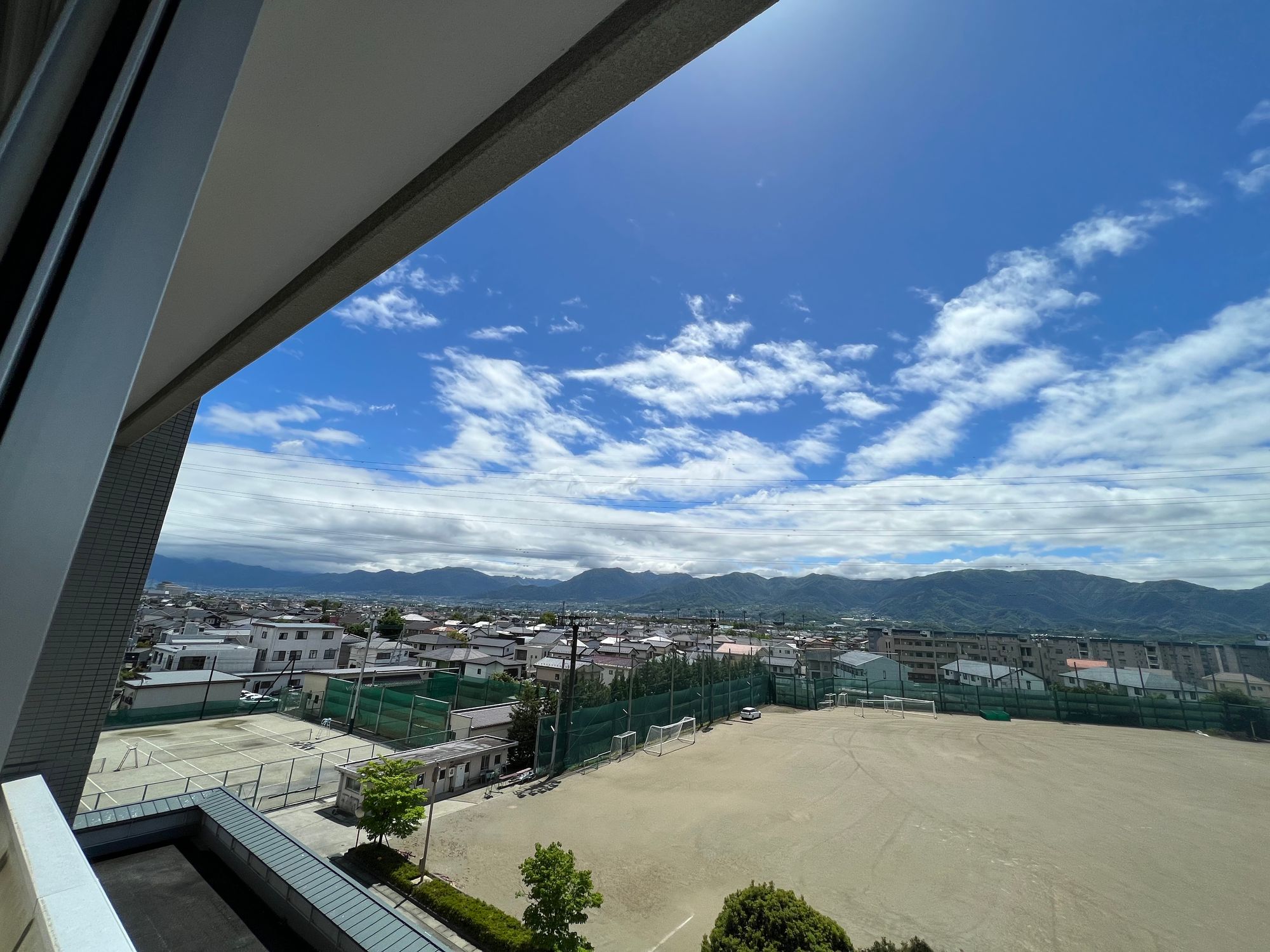
Indoor Shoes
Outdoor shoes are not worn indoors. There are large shoe lockers at the entrances of the school so that students and staff can change into their indoor shoes. For students, these look like matching white sneakers. For teachers, there’s more flexibility. My friend wore Crocs, while I opted for the stylish green slippers the school provided.
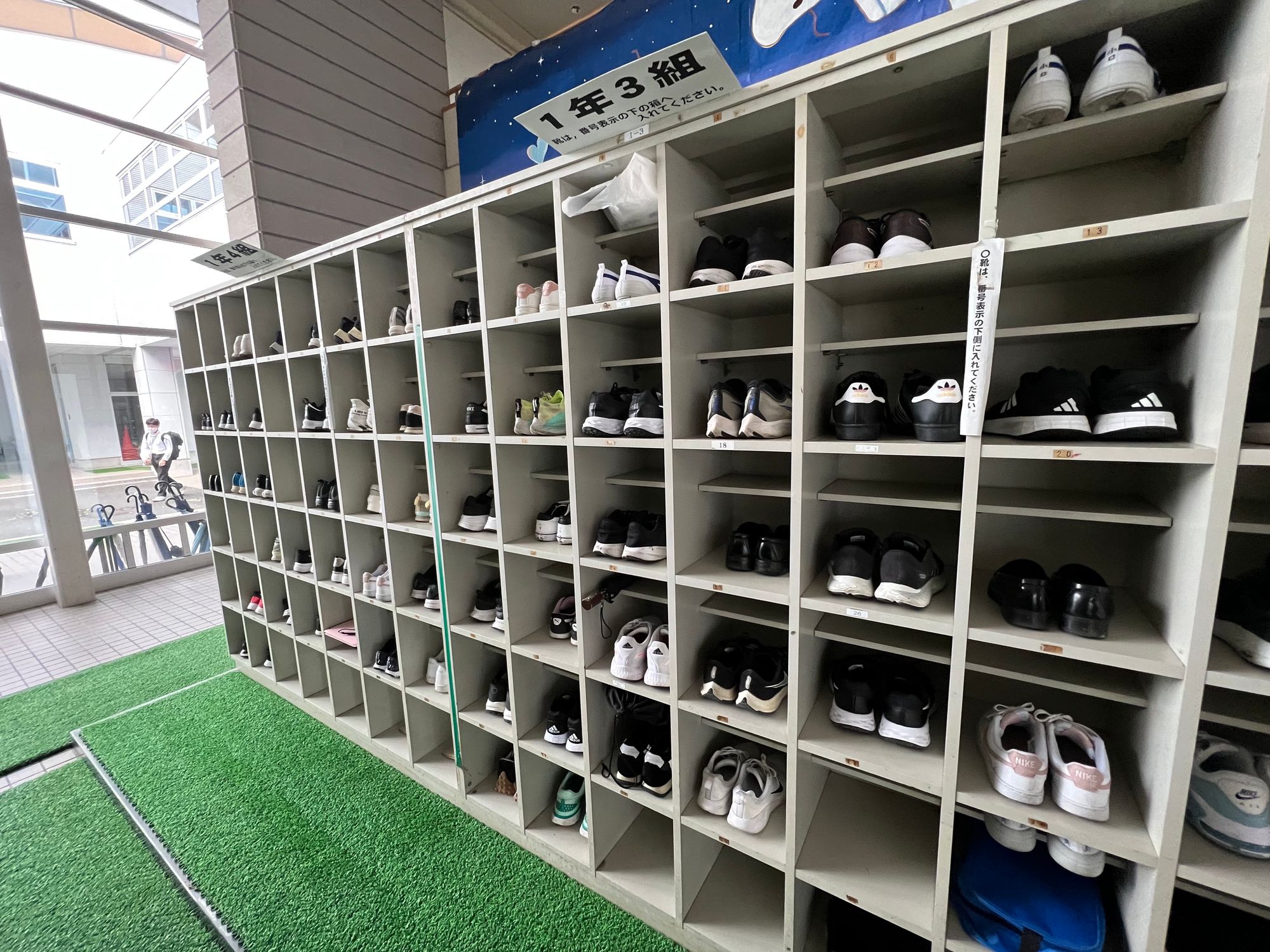

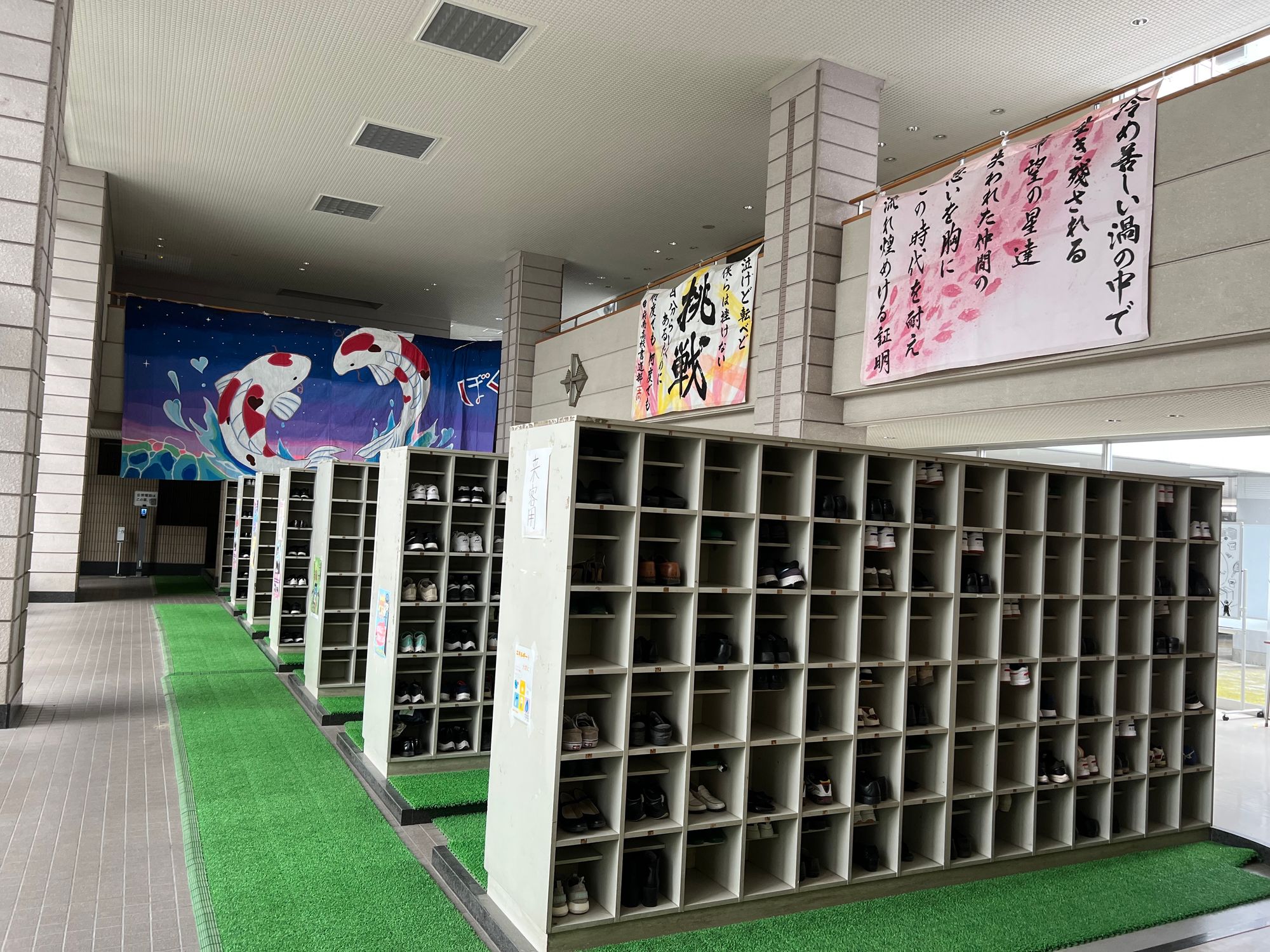
Public School Uniforms
I’m not sure if I’ve seen a public school in the U.S. that uses uniforms. They may exist, but either way, this was interesting. Students looked very professional in their white dress shirts and blazers.
Bowing
Japan’s cultural practice of bowing is one of the most salient differences between Japanese and U.S. classrooms. At the beginning of every class, the teacher selects a student to lead the class in a bow. The class bows to the teacher, and the teacher bows to the students. At the end of class, the process is repeated. “Attention, bow,” the lead student would say in English.
If that seems unusual, it may help to realize that bowing is present in other aspects of Japanese life as well. A smaller, polite bow often accompanies a thank you, good-bye, or the meeting of someone new. Still, there were moments when it caught me off guard, like in the classroom or the baseball field. Yep, baseball. When I spent some time with the baseball club, I was impressed that players all bowed to the field before running onto it to start practice. Such respect!
Teacher Room
In all the American high schools I’ve seen, teachers have their own classroom. Students travel from class to class as periods change. In this high school, it is the teachers that move from classroom to classroom. Students usually stay in the same class, but change from room to room sometimes, as well. Regardless, the big difference is that teachers do not have their own dedicated classroom. Instead, on the first floor, there is a very large teacher conference room, where each teacher has a desk. It reminded me of a floor of office cubicles… without the isolating cubicle walls. Throughout the day, teachers are coming in and out of this room. When students come to see a teacher, they stand at the entrance of the door, bow, and announce themselves and the teacher they are coming to see. For example: “I’m Sally Sue from class 1-1. I’m here to see Katherine-sensai to turn in homework.” I was also intrigued by this process because many students also spoke very softly.. I still don’t understand how the teachers recognized when they were being called…
I’ve always thought it would be fun to have your own classroom as a teacher. However, as I sat in the conference room, I saw some of its benefits, too. It puts you in proximity with the other teachers and facilitates a sense of teamwork or camaraderie. Now, I didn’t see teachers mingle too much–everyone was always working so diligently. Still, it made me appreciate the community that the teachers share. When I’ve subbed this year, I’ve thought about how it’s unfortunate that you see so little of the teachers from other parts of the building.

Cleaning Period
This high school did not have a janitor. Or, rather, it had hundreds of them. Every student and teacher participates in a “cleaning period” at the end of the school day. Students are assigned to groups with a certain teacher that oversees the cleaning of a specific area for the year. Chalkboards, erasers, desks, floors, hallways, bathrooms–every day. (understandably, there were certain things the students preferred to clean in their group, haha)
I remembered the viral moment from last year’s World Cup, after an exciting upset win over Germany, when Japan took time to clean the locker room. I remember thinking that was a nice thing for them to do. Now, I understand better that this moment was probably less about them just “doing something nice,” and more about them doing what they were used to doing–something they had learned as a part of their culture. (Still, it was a really nice thing to do!) When you are raised a certain way, building habits from an early age, these things become a more natural part of your life. For the students, this “cleaning period” is normal to them. There is an understanding and expectation to respect the space and keep it clean.


School Year Calendar
U.S. schools are known to end the school year in the late spring or early summer, and then start anew in late summer. No similar luxurious multi-month break here. The school year actually ends in the spring, with just a week long spring break separating the old and new years. They still have a summer break, but it’s only three weeks long. While they may have some more Mondays and Fridays off, the result is still more school days overall.
Teacher Hours
According to my friend, teachers are usually putting in 11-13 hour days at the school, with leaders being on the higher end of this range. They arrive between 7 and 8 am, and end up staying until at least 6:30pm. I remember when we left in the early evening after visiting some of the clubs, the teacher room was still pretty busy. A quick Google search poll says American teachers work an average of 54 hours per week. So, not a huge difference, but something to note.
Recap
As you can see, American and Japanese high schools have some noticeable differences. There are some that I haven't elaborated on–such as the use of technology (chalkboards still standard), lunches (packed and eaten in the classroom), and commuting habits (via train, bike, and walking). There are more that I'm sure I am not even aware of. Still, at the end of the day, it’s fundamentally the same: gather, learn core subjects, socialize, and grow–both during school hours and after. After classes end, most all students participate in a club, whether it be sports related (including baseball, soccer, track, tennis, archery, kendo), arts related (music, calligraphy), or something kind of in the middle (I’m talking about Karuta, the classical poetry card game that is played almost like a sport).
Many of these differences are related to the unique Japanese culture at large. Specifically, there is a deep-rooted respect for people and places that underlies much of the behavior that I observed. The bowing, the cleaning, the habit of only wearing indoor shoes inside. It all connects to respect, and through this, my perspectives were widened and humbled. I admired it.
I’m very thankful for my friend and her high school for this opportunity. As cultures share their strengths with each other, I believe we can all benefit, and we can continue to make life better for those around us–now and in the future.
